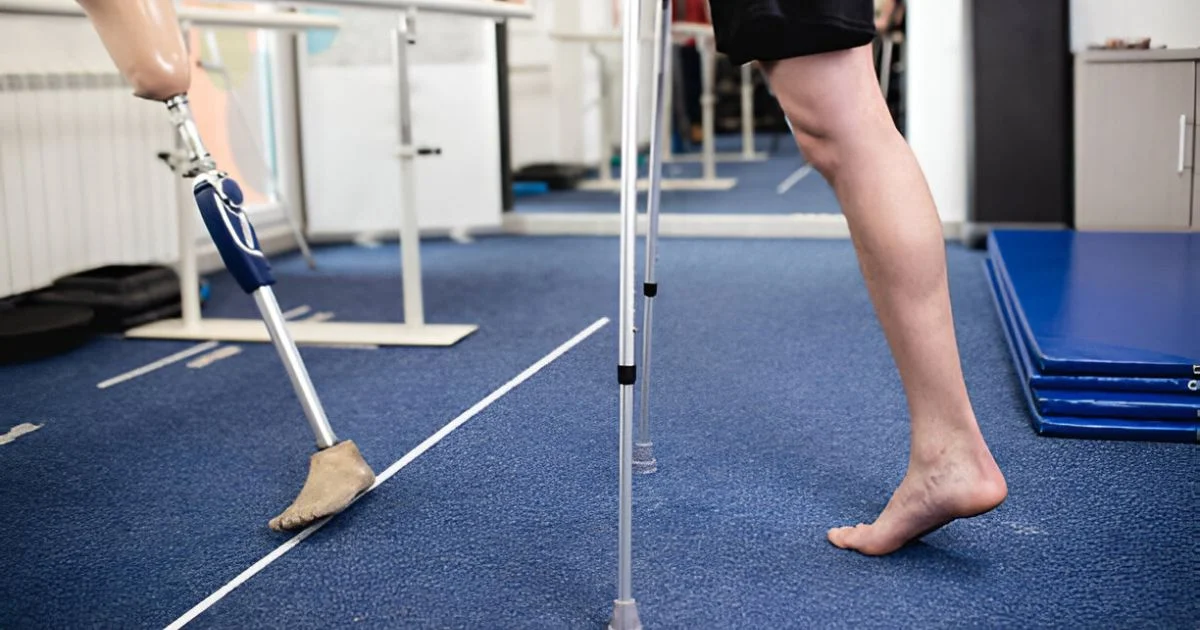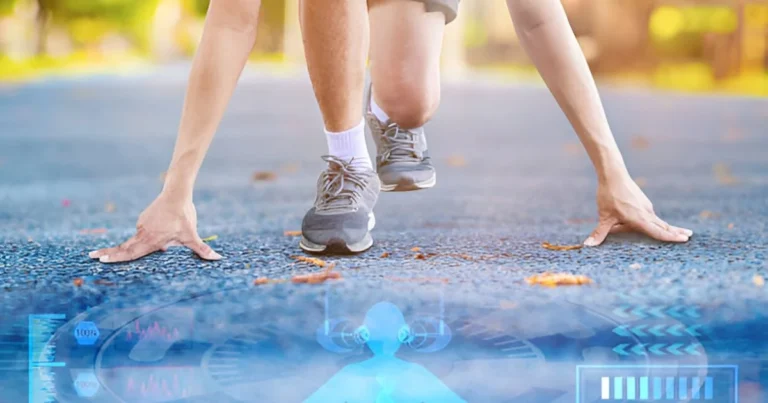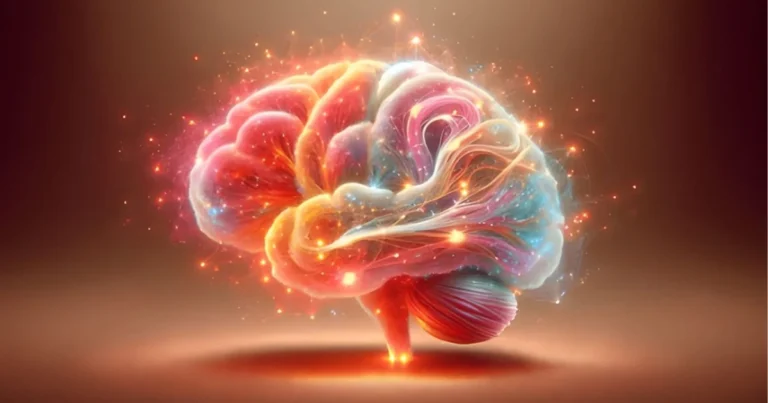Phantom pain: When the body feels what no longer exists
Mr. L., 56, lost his left leg in a motorcycle accident. Just days after the amputation, he began experiencing intense, localized pain in his left foot, a foot that no longer existed. He described it as a burning sensation, sometimes cramping, as though his toes were painfully curled. No topical treatment provided relief. When asked to point out where the pain was, he accurately indicated a phantom limb, as if it were still there.
Mr. L.’s case is far from unique. After an amputation, many individuals continue to feel the presence, and sometimes the pain, of a missing limb. This phenomenon, known as phantom limb pain, affects the vast majority of amputees. It can appear within days and persist with surprising tenacity. Despite centuries of observation, this pain without injury remains a mystery in medicine. It is neither an illusion nor a mere bodily memory, it is a disturbance rooted in the brain’s unwavering insistence on representing a body that is no longer there.
Today, neuroscience, surgery, and immersive technologies offer new insights. Understanding this unusual pain also sheds light on how we perceive our bodies, not simply as flesh and bone, but as dynamic constructions of the brain.
The brain’s map of the body: Penfield’s legacy
Phantom pain defies conventional rules. There is no visible wound, no inflammation, and yet the pain is undeniably real. The brain continues to act as though the amputated limb still exists. It sends and receives signals, interprets sensations, and builds perceptions. This disconnect between physical absence and neurological presence opens a profound gap in our understanding of the body.
This strange persistence finds its roots in neuroplasticity. Contrary to the long-held belief that the brain is a static map, it is, in fact, flexible, constantly adapting and reorganizing. When a limb is lost, the corresponding cortical region doesn’t simply vanish. Instead, other areas, such as those representing the face or arm, gradually take over the vacant space. This reorganization can lead to unusual, and sometimes painful, sensations.
This idea stems from the pioneering work of Canadian neurosurgeon Wilder Penfield. In the 1930s, while operating on awake patients with epilepsy, Penfield discovered that stimulating specific areas of the cortex triggered highly localized bodily sensations. Intrigued, he systematized his observations and mapped the primary somatosensory cortex, located in the postcentral gyrus of the parietal lobe. He revealed that each body part is represented in the brain in an organized, but disproportionate, manner, reflecting the density of sensory receptors: hands, lips, and tongue occupy exaggeratedly large areas. This mapping gave rise to the “Penfield homunculus,” a figure both anatomical and symbolic, visually illustrating how the body is inscribed into the brain’s structure.
And this map doesn’t fade with amputation. Its persistence maintains the neurological presence of the missing limb, as if the brain refuses to relinquish its sensory territory. It is precisely this gap, between the physical absence of the limb and its continued representation in the cortex, that forms the foundation of phantom sensations. In the absence of peripheral input to update this map, the brain, striving for coherence, may generate its own erroneous perceptions. These may appear as vague feelings of presence, or, more distressingly, as sharp or throbbing pain. This phenomenon highlights not only the remarkable power of brain plasticity, but also the consequences when loss is not adaptively integrated into the neural circuits.
🔗 Read also: The Unseen Truth: Exploring the Neurological Roots of Anton Syndrome
A pain with many faces
To better understand why some people develop phantom limb pain while others do not, researchers Ishigami and Boctor analyzed potential causes across three critical stages: before, during, and after amputation. Before surgery, certain factors increase the risk: advanced age, pre-existing chronic pain, or psychological vulnerability. Social isolation, depression, and anxiety also appear to heighten susceptibility. The body never suffers in isolation, the mind colors, modulates, and sometimes intensifies neural signals. During surgery, the surgical technique itself can play a crucial role. For instance, when nerves are severed abruptly, they may form neuromas, disorganized, often painful nerve endings. These nerve clusters can trigger localized pain and contribute to phantom pain that feels distant from the actual source.
Fortunately, surgical practices are evolving. Two promising techniques have emerged: Targeted Muscle Reinnervation (TMR) and Regenerative Peripheral Nerve Interfaces (RPNI). These approaches aim to repurpose severed nerves by reconnecting them to healthy muscle tissue, preventing them from going rogue. These methods have significantly reduced phantom pain and improved prosthetic control. In some studies, patients who underwent these techniques reported no phantom pain at all, compared to the usual rates of 64% to 91%. These encouraging results place surgical planning at the forefront of pain prevention, provided it is considered in advance and performed by teams trained in these innovative procedures.
After the operation, continued vigilance is crucial. Subacute pain, lasting a few weeks, can signal the onset of chronic phantom pain. Lower limb amputations, especially those closer to the torso, appear to carry higher risk. However, in some cases, the mere feeling of movement, the sense that the lost limb can still move, can protect against pain. As if the brain, by preserving a motor trace of the limb, helps maintain a fragile internal balance.
🔗 Explore further: When Science Becomes Story: Exploring the World of Brilliant Minds
When virtual reality retrains the brain
What if relieving pain were simply a matter of deceiving the brain? Inspired by the well-known mirror therapy, a new approach uses virtual reality to restore a visible form to the missing limb. In a recent study led by Kristine N. Lokers and her team at the University of Michigan, amputees wore virtual reality headsets. The concept is simple yet ingenious: through these headsets, patients can see a virtual limb, say, a leg or an arm, moving as though it were real. This movement is synchronized with the movement of the remaining limb, or even just with the intention to move. This visual illusion appears sufficient to reorganize brain activity. The brain receives a coherent message: there’s a limb, it moves, it responds. That coherence helps calm the hyperactivity of the neural circuits.
Virtual reality enables rich sensory experiences, allowing patients not only to see but sometimes even to interact with a virtual limb, rebuilding the link between perception, movement, and bodily representation. Though preliminary, the results are promising. Several amputees in the study reported significant pain relief. For them, this form of modern visual training offers a new path toward reconnection with their own bodies.
🔗 Discover more: When the world distorts: The neuroscience behind Alice in wonderland syndrome
Phantom pain is more than a symptom, it is a haunting reminder of how our brain constructs our body image. A shifting, imperfect, sometimes painful image, but always deeply human. This phenomenon invites a broader reflection: what remains of a body once it’s gone? Can we speak of bodily memory, of sensory persistence independent of physical form? This isn’t about slipping into easy dualism, but about acknowledging the richness of cerebral mechanisms that extend our flesh far beyond its disappearance. The body isn’t limited to what we see. It’s also what we feel, what we’ve felt, what our brain continues to represent, even in absence. Phantom pain is the ultimate proof: a pain not born of injury, but of a bodily memory that the brain, relentlessly, refuses to forget.
References
Ishigami, S., & Boctor, C. (2024). Epidemiology and risk factors for phantom limb pain. Frontiers in Pain Research, 5, 1425544.
Lokers, K. N., Stanziano, D. C., & Arp, A. M. (2023). Extended reality used in the treatment of phantom limb pain. Frontiers in Pain Research, 4, 105104.
Essers, R. J., Smit, M., & Nierkens, S. (2023). Immersive virtual reality in patients with phantom limb pain: A pilot study. Frontiers in Pain Research, 4, 1027890.








